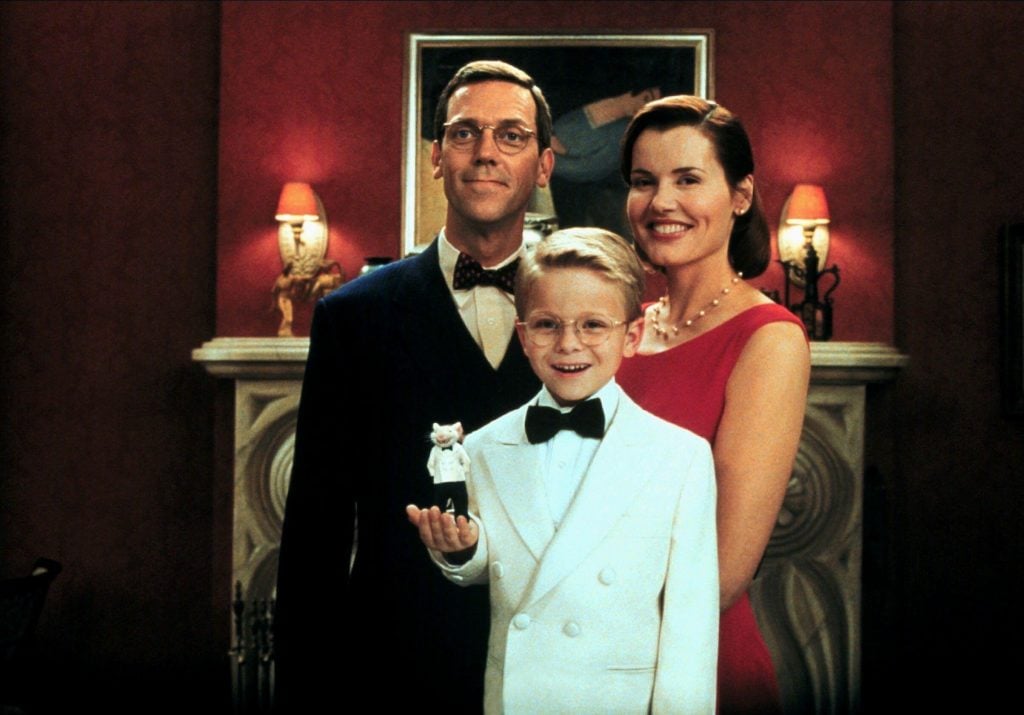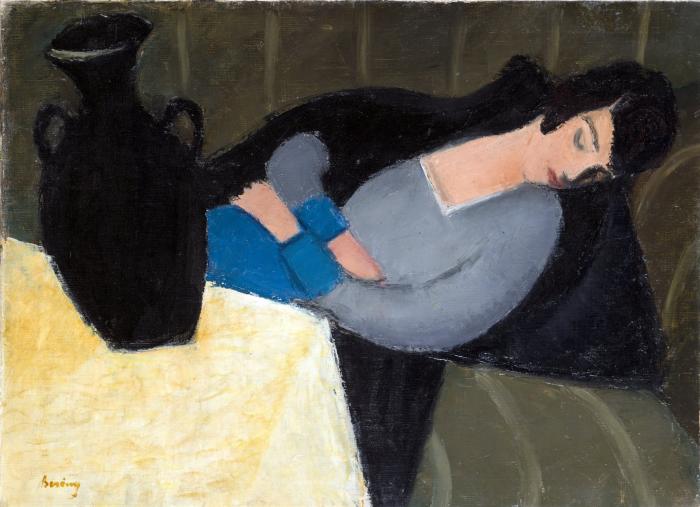Pop Culture
As Seen on ‘Stuart Little’: A Long-Lost Hungarian Masterpiece
A Róbert Berény painting was deemed lost—until it turned up on the set of a film about a talking mouse.

Based on the 1945 novel by E.B. White, Stuart Little (1999) tells the story of a New York family, which has curiously decided to adopt a talking mouse, the titular Stuart, voiced by Michael J. Fox. It’s a fairy tale, filled with family-friendly charm and quips like, “I’m so happy, I feel 10 inches tall!” In other words, it’s hardly the venue to crack an art-world cold case, but art historian Gergely Barki would beg to differ.
In 2009, Barki was watching the movie with his daughter Lola, when, not 20 minutes into it, he noticed a familiar painting. The scene is a family gathering, where the Littles are introducing the new member of their family to their extended clan. People have brought presents, including a human-sized bowling bowl and a human-sized bike. They unwrap them in the family’s living room, which is decorated with bright red wallpaper and hung with paintings—one of which is by the hand of Róbert Berény, a celebrated Hungarian avant-gardist.
“I couldn’t believe my eyes when I saw Berény’s long-lost masterpiece on the wall behind Hugh Laurie. I nearly dropped Lola from my lap,” Barki told the Guardian. “A researcher can never take his eyes off the job, even when watching Christmas movies at home.”

Róbert Berény, Sleeping Lady with Black Vase (1927–28). Photo: Public Domain.
Titled Sleeping Lady with Black Vase (1927–28), the work depicts Berény’s wife napping on an upholstered surface, with a black vase poised on a table-top beside her—their forms rendered in Cubist-esque planes. The painting was exhibited at the Ernst Museum in Budapest (Barki recognized the painting from photographs of the show), before it was likely sold to a Jewish collector. In the tumultuous aftermath of World War II, it was deemed lost.
Looking for answers, Berény sent almost 50 emails to production companies associated with the film and it took him two years to hear back from the set designer who owned it. Turns out, the designer had purchased the painting for $500 from an antique store in Pasadena, California. The work was hung as set decor in TV series such as Family Law, before it ended up in the living room of the Littles. After production wrapped on Stuart Little, the set designer bought the painting from Sony Pictures and hung it in her own home.
Barki traveled to Washington, D.C. to meet with the designer and verify that the painting was genuine. The designer later sold the painting to an unnamed art collector who put it up for auction in 2014. It fetched $283,555, according to the Artnet Price Database. Due to the publicity surrounding its rediscovery, the canvas is now regarded as one of the most well-known Hungarian paintings.
Even Laurie, who played Frederick Little in the film, couldn’t help his own amazement. “Little hurt to discover the foreground performances couldn’t hold the attention,” he cheekily tweeted in 2014, “but still, what an honor…”
As Seen On explores the paintings and sculptures that have made it to the big and small screens—from a Bond villain’s heisted canvas to the Sopranos’ taste for Renaissance artworks. More than just set decor, these visual works play pivotal roles in on-screen narratives, when not stealing the show.





